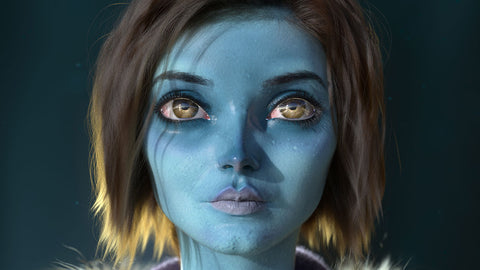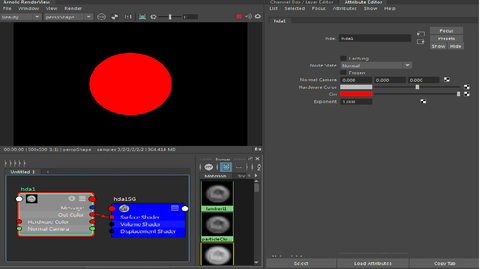Your Cart is Empty
Get a Personalized Quote×
Overview
Why use Arnold:
|
Highlights
 |
Switch seamlessly between CPU and GPU rendering to suit your production needs for characters, scenery, and lighting, and get optimized performance when rendering elements such as hair, fur, and skin. |
|
Integrate and customize your pipeline Easily integrate Arnold with all the top 3D digital content creation tools, get the scalability and customization of an open and extensible architecture, and create custom shaders. |
|
What's New
- Flexible and extensible API - Integrate Arnold into external applications and create custom shaders, cameras, light filters, and output drivers.
- Universal Scene Description (USD) support - Maximize the power of USD with Arnold in production scenarios.
- Imagers - Use Bloom, Light Mixer, Noice, and OptiX denoiser imagers to control lighting effects and automatically denoise after each render.
- Stand-alone command-line renderer - Arnold has a native scene description format stored in human-readable text files. Easily edit, read, and write these files via the C/Python API.
- Standard Surface shader - Produce a wide range of materials and looks with this energy-saving, physically based uber shader.
- Standard Hair shader - Render hair and fur with this physically based shader, based on the d'Eon and Zinke models for specular and diffuse shading.
- Alembic procedural - Render Alembic files directly without any translation with a native procedural.
- Profiling API and structured statistics - Identify performance issues and optimize rendering processes more easily with an extensive set of tools.
- Material assignments and overrides - With operators, override any part of a scene at render time and enable support for open standard frameworks such as MaterialX.
- Built-in Cryptomatte - Create ID mattes automatically with support for motion blur, transparency, and depth of field.
-
Integrated OpenColorIO v2 - Take advantage of OpenColorIO v2 for state-of-the-art color management.
Features
From furry creatures to wondrous landscapes, the robust Arnold toolset helps artists render professional-grade 3D characters and complex scenes with ease.
 |
 |
 |
|
Arnold GPU Arnold GPU allows users to switch seamlessly between CPU and GPU rendering. |
Subsurface scatter High-performance ray traced subsurface scattering eliminates the need to tune point clouds. |
Hair and fur Memory-efficient ray traced curve primitives help you create complex fur and hair renders. |
 |
 |
 |
|
Motion blur 3D motion blur interacts with shadows, volumes, indirect lighting, reflection, or refraction. Deformation motion blur and rotational motion are also supported. |
Volumes The volumetric rendering system in Arnold can render effects such as smoke, clouds, fog, pyroclastic flow, and fire. |
Instances Arnold can more efficiently ray trace instances of many scene objects with transformation and material overrides. |
 |
 |
 |
|
Subdivision and displacement Arnold supports Catmull-Clark subdivision surfaces. |
OSL support Arnold now features support for Open Shading Language (OSL), an advanced shading language for Global Illumination renderers. |
Light Path Expressions LPEs give you power and flexibility to create Arbitrary Output Variables to help meet the needs of production. |
 |
 |
 |
|
Adaptive sampling Adaptive sampling gives users another means of tuning images, allowing them to reduce render times without jeopardizing final image quality. |
Toon shader An advanced Toon shader is part of a non-photorealistic solution provided in combination with the Contour Filter. |
Denoising Two denoising solutions in Arnold offer flexibility by letting designers use much lower-quality sampling settings. |
|
Flexible and extensible API Integrate Arnold in external applications and create custom shaders, cameras, light filters, and output drivers. |
Stand-alone command-line renderer Arnold has a native scene description format stored in human-readable text files. Easily edit, read, and write these files via the C/Python API. |
Standard Surface shader This energy-saving, physically based uber shader helps produce a wide range of materials and looks. |
|
Standard Hair shader This physically based shader is built to render hair and fur, based on the d'Eon and Zinke models for specular and diffuse shading. |
Alembic procedural A native Alembic procedural lets users render Alembic files directly without any translation. |
Profiling API and structured statistics An extensive set of tools lets users more easily identify performance issues and optimize rendering processes. |
|
Material assignments and overrides Operators make it possible to override any part of a scene at render time and enable support for open standard frameworks such as MaterialX. |
Built-in Cryptomatte Create ID mattes automatically with support for motion blur, transparency, and depth of field. |



